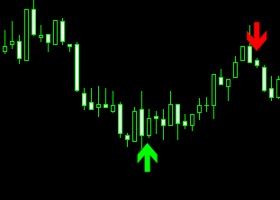Definitions, Market Structure Dominate HFT Debate at BST North America
Definitions, Market Structure Dominate HFT Debate at BST North America.
In what was by far the most colorful and contentious panel at the Buy-Side Technology North American Summit held today in New York, three electronic market-makers debated what's wrong with the ongoing industry, regulatory, and political discussion around high-frequency trading (HFT).
The debate, with Allston Trading's Raj Mahajan and Nobilis Capital's Chris Bartlett defending HFT practices, and Josh Levy of Tactical Asset Management arguing the reverse, stemmed primarily from two issues.
The first was around agreeing on a precise definition of "frontrunning," and whether under that definition, the practice should be seen as predatory or even illegal. "To me, any order that's being made simply to take advantage of another order that you know is taking place—that's frontrunning," Levy said, while trying to avoid, but ultimately using, the term "dishonorable" to describe the practice of latency arbitrage. He pointed to the exorbitant cost of co-location and proprietary market data feeds as two features of the current market that give certain shops an unfair advantage.
In response, Bartlett said that information asymmetries have always defined markets. and that the significant investment—sometimes in the hundreds of millions of dollars—to simply run the fiber optic wire or develop new microwave technology to shave off milliseconds, represents a huge risk. "The short version is that this is capitalism in action," he said, citing the New York-to-Chicago wire built by Spread Networks at nine-digit cost as an example of a gambit that proved a bust.
Allston's Mahajan then brought up the second point of contention: that it's easy to throw stones at HFT in equities, when in reality the currency and derivatives are less regulated, more fragmented, and generally require sell-side permission to access the deepest pools of liquidity.
"If you look at XLF exchange-traded funds (ETFs) and trading in those, technology clearly comes in to play in that you must be able to determine on a second-by-second basis what is fair market value of XLF as a function of its 20 underlying stock components, in addiction to what you've done to determine if the underlying also contain any stocks or cash, and comparing that to determine what the price should be and then maybe hedge it with those 20 stocks. To do that provides liquidity to XLF itself, but there are nuances to this. You need to make sure you're getting all the price information for those stocks in real time and have to invest significantly in a presence at NYSE and Nasdaq as well as the various alternative venues, and to engage in that strategy you need infrastructure across all these different end-points. To do so, you can't be the slow person," he explained.
Examining the future HFT going forward, especially with heightened scrutiny and regulation, Mahajan predicted a bifurcated group of market-makers, with large sell-side firms pulling back and certain buy-side firms stepping in. "There's going to be a set of firms that are very good that run professional operations, and step into roles that banks used to play. Certain firms like Virtu Financial or KCG have surpassed others with their technology, and we should welcome that, whereas others like Goldman for equities or Citibank for FX can specialize in stuff that's balance-sheet intensive," he said.
What they could all agree on is eventual implementation of a registry for HFT-associated market-makers, so that Sifma and the Securities and Exchange Commission (SEC) will have, as Bartlett put it, "butts to kick."
As for what the continuing uncertainty and public frustration with HFT will mean for liquidity in the long-term, Mahajan put it simply: "Spreads will get bigger."
For more coverage of BST North America, continue to follow Waters and buysidetechnology.com in the coming days.


